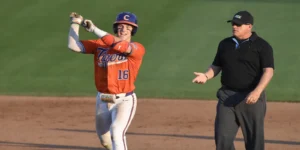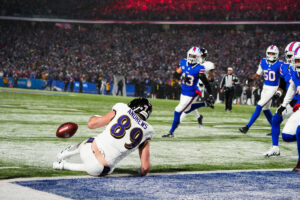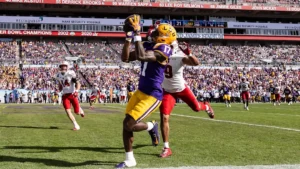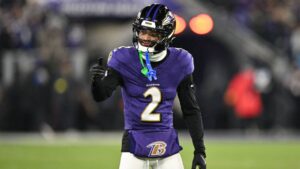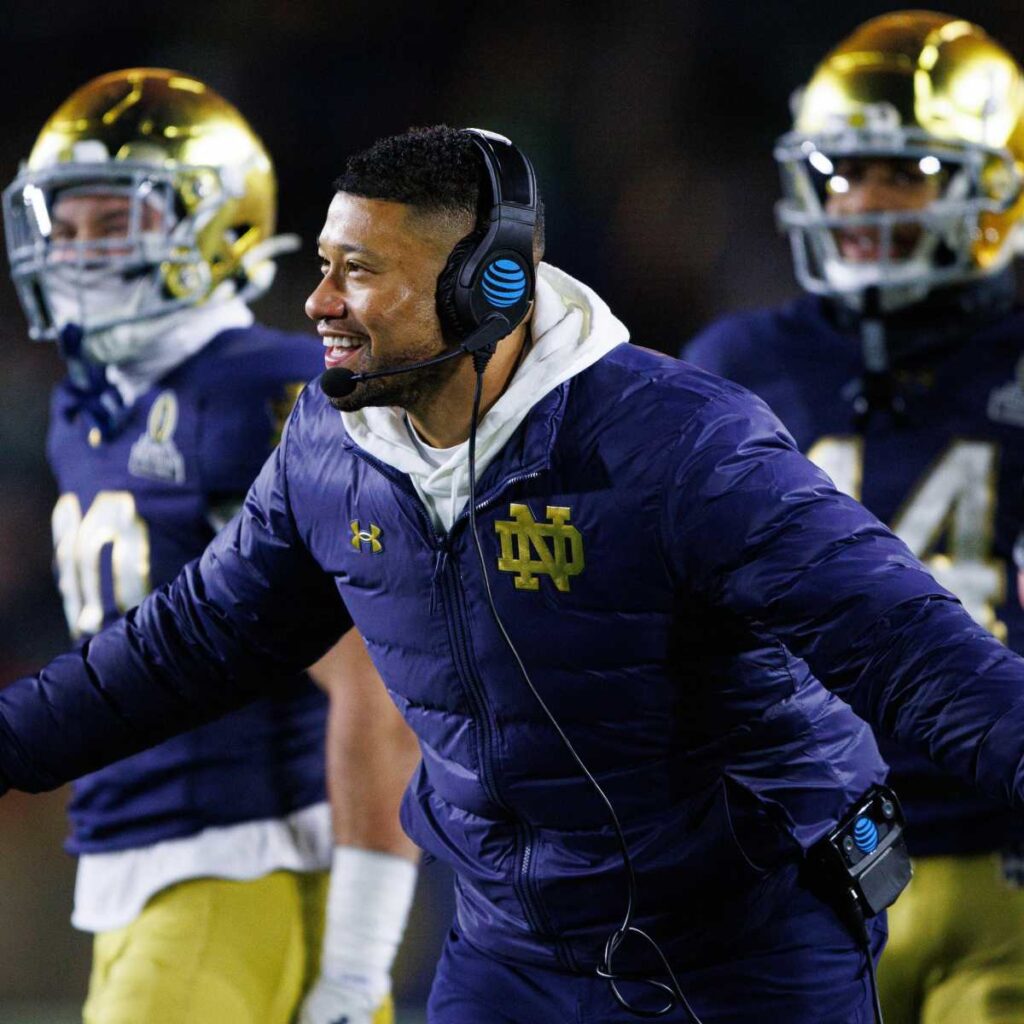
Marcus Freeman Reflects on Quarterbacks, Progress, and the Path Ahead After Notre Dame’s Blue-Gold Game
Notre Dame’s Blue-Gold Game has long served as a benchmark — a measuring stick of sorts for where the team stands exiting spring football. For second-year head coach Marcus Freeman, Saturday’s exhibition wasn’t just about plays made and points scored, but about perspective: on quarterbacks, on growth, and on what comes next for a program determined to return to national prominence.
Freeman addressed the media following the intrasquad scrimmage inside Notre Dame Stadium, offering a thorough rundown of his impressions from spring camp and, more importantly, what he learned from watching his team under the lights — or in this case, under the bright spring sky in South Bend.
The focus, naturally, began with the quarterback room. While it’s too early to name a starter definitively, all eyes were on the battle between incumbent signal-caller Steve Angeli and early enrollee CJ Carr, the five-star freshman with the kind of upside that stirs excitement among Irish fans and coaches alike.
“I thought both guys had really strong moments,” Freeman said. “Steve showed his command. He’s comfortable in the offense. He knows where to go with the ball, and you can tell he’s taken steps since the end of last season. CJ — you see the talent. He can make throws not every kid can make at that age. But it’s the poise that impressed me most.”
Angeli, who saw limited action last fall behind Sam Hartman, looked composed in the pocket, completing quick-hitting passes to his tight ends and backs while sprinkling in the occasional deep ball. He’s not flashy, but Freeman noted his consistency, accuracy, and decision-making as key assets.
Carr, meanwhile, had the kind of debut that teased his potential. Though he wasn’t perfect — a couple of mistimed throws and late reads reminded everyone of his youth — the arm strength, athleticism, and competitive edge were plain to see.
“CJ’s learning,” Freeman emphasized. “But he’s hungry. He wants to be great. He’s in the film room, on the practice field, asking questions. That’s what you want in a young quarterback. He’s not satisfied.”
Freeman’s breakdown of the quarterback competition, though, was just the beginning of a broader reflection on where the team stands after fifteen spring practices. The game itself, which ended in a relatively tame scoreline, wasn’t designed to showcase offensive fireworks or defensive domination. It was about execution, communication, and cohesion.
“We wanted to keep things pretty simple today,” Freeman admitted. “It wasn’t about unveiling schemes or dialing up exotic looks. It was about seeing guys compete and respond to pressure, about watching how players handled assignments and interacted with teammates.”
Among the standouts, Freeman highlighted linebacker Jaylen Sneed, who showed improved instincts and sideline-to-sideline speed after an up-and-down sophomore season. Sneed’s emergence could be key for a defense looking to replace the production and leadership of JD Bertrand.
On the defensive line, rising junior Rylie Mills had a dominant showing, recording multiple tackles for loss and blowing up several run plays. Freeman beamed when discussing his progress.
“Rylie’s ready to be a difference-maker,” he said. “The physical traits have always been there, but now the game’s slowing down for him. He’s playing with more control, more awareness.”
In the secondary, true freshman Leon Harris turned heads with a late interception and solid coverage throughout the afternoon. The staff has high hopes for the early enrollee, and Freeman didn’t shy away from praising his football IQ.
“He sees things early,” Freeman said. “That’s rare for a kid his age. He understands spacing, leverage, and he’s not afraid of the moment.”
Offensively, Notre Dame’s wide receiver group showed signs of growth, though Freeman admitted it remains a work in progress. Jaden Greathouse made a couple of contested catches, and sophomore Jordan Faison flashed his speed on an end-around that drew a roar from the crowd.
Still, the Irish head coach acknowledged the need for more consistency and depth at the position.
“We need guys to separate — literally and figuratively,” he said. “We’ve got talent in that room, but we’re looking for someone to step up and become the guy. That’s still developing.”
Freeman was more upbeat about the offensive line, which despite replacing multiple starters from last year’s unit, looked physical and connected. Center Ashton Craig, in particular, earned praise for his leadership in the trenches.
“I thought our offensive line took a step this spring,” Freeman noted. “We’ve got young guys growing into bigger roles, and that takes time, but the chemistry is coming together. Ashton’s been tremendous — he’s vocal, he’s smart, and he’s earned the respect of the room.”
While many of the day’s headlines centered on position battles and playmaking, Freeman also touched on the overall culture of the program — something he’s worked tirelessly to establish since taking the reins in late 2021. Spring football, he noted, is as much about identity as it is about execution.
“I’m proud of the way these guys have bought in,” he said. “Spring is tough. It’s grindy. It’s not glamorous. But our guys attacked it every day. They brought energy, and they pushed each other.”
One of Freeman’s major themes was player-led leadership. With Hartman, Bertrand, and a number of other veterans gone, Notre Dame is in the process of redefining its leadership core. Freeman wants captains to emerge organically — not by assignment, but by action.
“You don’t just slap a ‘C’ on someone’s jersey and expect it to work,” he said. “Leadership is about showing up, being accountable, lifting others up. That’s what we’re starting to see, and that’s what gives me confidence heading into summer.”
Though fall camp remains months away, Freeman and his staff will spend the coming weeks breaking down film, refining depth charts, and identifying areas for improvement. He knows there’s work to be done — in all three phases — but the tone of his postgame remarks was optimistic, even purposeful.
“We’re not where we need to be yet,” Freeman admitted. “But that’s the point of spring. You want to come out of it with clarity — on your strengths, your weaknesses, and your direction. I think we’ve done that.”
Asked whether he’s closer to knowing who will start at quarterback when the Irish open their season against Texas A&M, Freeman gave a measured but hopeful response.
“Closer, yes. Decided? No,” he said. “But we’ll let it play out. There’s a lot of time between now and September. What matters is continuing the growth we’ve seen.”
If growth is the operative word, then Notre Dame’s spring can be deemed a success. There’s a clear sense of development — not just among individuals, but within the structure and spirit of the team.
In many ways, that’s a testament to Freeman’s evolving vision as head coach. He’s no longer just building a roster — he’s shaping a culture, reinforcing expectations, and guiding a group of young men toward a shared goal: competing at the highest level.
That goal, of course, remains the same as it ever was in South Bend — to win, and to win big. The Blue-Gold Game may not be a definitive moment, but it’s a meaningful step in the journey. And as Freeman stood on the field afterward, surrounded by players, staff, and fans, he seemed to recognize the significance of that step.
“We’ve got a long way to go,” he said, “but I like where we’re headed.”
